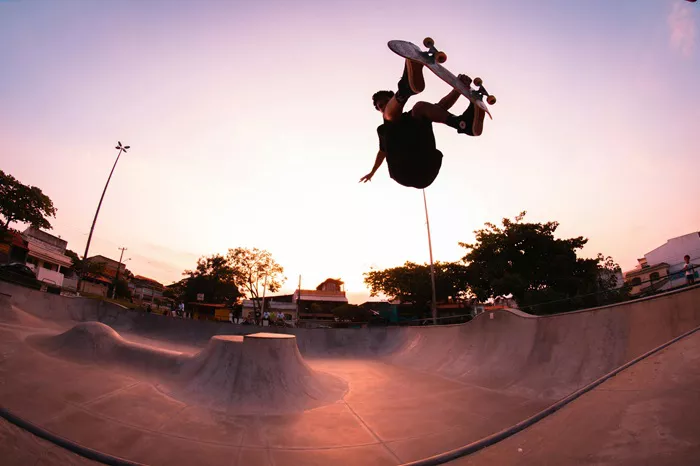Skateboarding, a dynamic and expressive sport, encompasses various styles that cater to different environments and preferences. Among these, park and street skateboarding stand out as two distinct disciplines, each with its own unique characteristics and challenges. This article delves deeper into the nuanced differences between park and street skateboarding, offering comprehensive insights into their respective environments, techniques, equipment preferences, and the vibrant cultures that surround each style.
Skateboarding has undergone significant evolution, branching into specialized styles that reflect the diversity and creativity of its participants. Park and street skateboarding represent two primary categories, each demanding distinct skills and strategies. Understanding these differences is essential for skateboarders aiming to explore the full spectrum of the sport.
Understanding Street Skateboarding
Street skateboarding is rooted in urban environments, utilizing everyday objects and structures as obstacles. It emphasizes creativity, adaptability, and technical proficiency. Skaters navigate streets, plazas, stairs, handrails, ledges, and other urban features, transforming them into opportunities for tricks and maneuvers. Street skateboarding often involves grinding, flipping tricks, and using the environment in innovative ways to showcase skill and style.
Park skateboarding typically unfolds in purpose-built skate parks or facilities. These parks feature an array of ramps, bowls, halfpipes, and other obstacles designed to facilitate a variety of tricks and maneuvers. The environment is structured, offering skaters opportunities to seamlessly transition between different features and create continuous lines of tricks.
The Art of Park Skateboarding
Park skateboarding takes place in specially designed skate parks with ramps, bowls, half-pipes, and various other features. Unlike street skateboarding, park skating offers a controlled environment that allows skaters to focus on transitions, aerial maneuvers, and flow. Parks are designed to simulate natural terrain and provide a canvas for skaters to explore vertical elements, transitions between obstacles, and creative lines.
see also:
Key Differences in Terrain and Obstacles
Terrain in Street Skateboarding
Street skateboarding primarily utilizes urban landscapes, including:
Stairs
Handrails
Ledges
Benches
Curbs
These elements require skaters to adapt to varied surfaces and conditions, enhancing their ability to skate in diverse environments.
Obstacles in Park Skateboarding
see also: How Olympic Skateboarding Is Judged
Park skateboarding features:
Ramps
Bowls
Half-pipes
Quarter-pipes
Spines
These structures are designed to facilitate aerial tricks, transitions, and fluid movement, allowing skaters to build momentum and execute complex maneuvers.
Techniques and Skills
Skills in Street Skateboarding
Street skaters focus on:
Technical tricks like kickflips, heelflips, and varial flips
Grinds and slides on rails and ledges
Ollies and nollies to navigate obstacles
Precision and consistency are crucial in mastering street skating techniques, as skaters often perform tricks in quick succession and under varying conditions.
Techniques in Park Skateboarding
Park skaters emphasize:
Airborne tricks such as grabs, spins, and aerial flips
Pumping transitions to maintain speed
Flow and creativity in linking tricks and navigating park features
Park skating requires spatial awareness, timing, and the ability to generate speed and momentum through transitions and aerial maneuvers.
Competitive and Recreational Aspects
Street Skateboarding Culture
Street skating is deeply ingrained in urban culture and often associated with DIY ethics, creativity, and exploring the urban landscape. Skaters may participate in competitions, video projects, and community-driven events that celebrate street culture and creativity.
Park Skateboarding Community
Park skating fosters a community around skate parks, events, and competitions. Skaters collaborate on park designs, participate in organized contests, and share a passion for mastering transitions, airs, and park-specific techniques. Park skating promotes camaraderie and skill development within a supportive environment.
Conclusion: Choosing Your Skateboarding Path
In conclusion, whether you’re drawn to the raw creativity of street skateboarding or the structured challenges of park skating, both styles offer unique avenues for self-expression, skill development, and community engagement. Understanding the differences between park and street skateboarding allows skaters to explore their preferences, hone their techniques, and contribute to the vibrant culture of skateboarding worldwide.
This comprehensive guide highlights the distinctions between park and street skateboarding, offering insights into their respective techniques, environments, and community dynamics. Whether you’re a novice skater exploring different styles or a seasoned enthusiast looking to delve deeper into the nuances of skateboarding, this article provides a valuable resource for understanding and appreciating the diversity within the sport.
related topics:
- What Causes Most Skateboarding Or Inline Skating Falls
- A Detailed Look At Redwood City’s Skateboarding Rules
- How To Learn Skateboarding For Beginners

